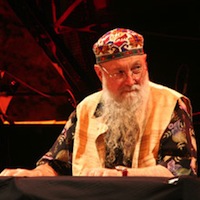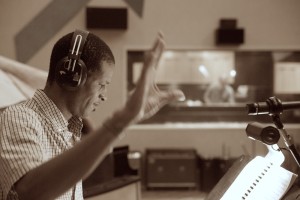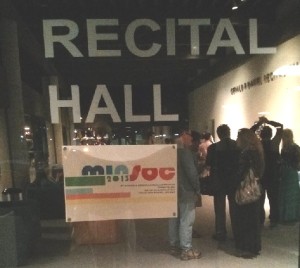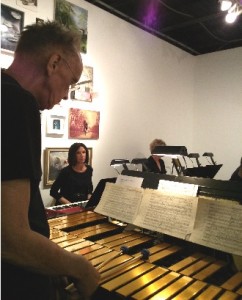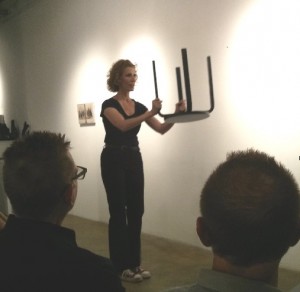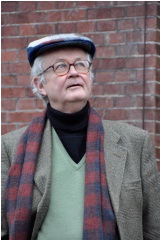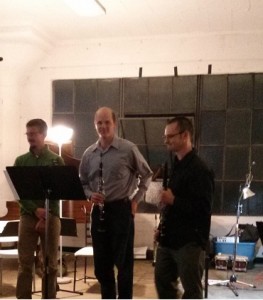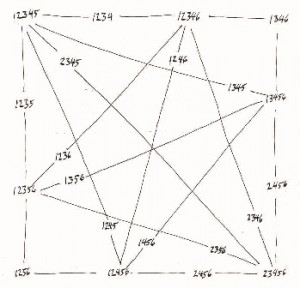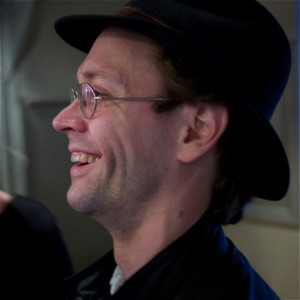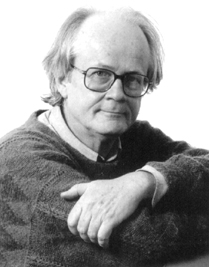Opening Night at Miller Theater

Photo: Jeffrey Herman
On September 15, Ensemble Signal, conducted by Brad Lubman, presented an all-Steve Reich program to open the season at Columbia University’s Miller Theatre. There was a sold out crowd, populated both by contemporary music devotees and over 200 Columbia students. Reich turns eighty later this year, and this is one of the many birthday concerts that will fete the composer.
Signal has recorded several albums of Reich’s music, including a 2016 release on Harmonia Mundi that features his Double Sextet and Radio Rewrite, recent works that demonstrate the undiminished energy and invention of their creator. The Miller Theatre concert focused on two sets of “variations,” composed in the prior decade: Daniel Variations (2006) and You Are Variations (2004). The amplified ensemble featured a superlative small complement of singers, a string quintet, a quartet of grand pianos, and a bevy of percussion and wind instruments. They were recording the concert, one hopes for subsequent release.
Daniel Variations is, in terms of instrumentation, the slightly smaller of the two. Alongside the aforementioned piano/percussion group, Reich employs a quartet of vocalists (two sopranos and two tenors, singing in a high tessitura for much of the piece), string quartet, and two clarinets. There are two textual sources for the piece. The first are the words of Wall Street Journal reporter Daniel Pearl, who, while reporting on the conflict in Pakistan in 2002, was captured and killed by Islamic extremists. These are offset by quotations from the Book of Daniel, a text from the Old Testament of the Bible. The texts underscore Pearl’s Judaism and also his love of music (he was an amateur string player). Indeed, the last movement of the piece, “I sure hope Daniel likes my music, when the day is done,” is a trope on a Stuff Smith song, “I Sure Hope Gabriel Likes My Music,” found in Pearl’s record collection after his death.
You Are Variations finds Reich exploring texts from his spiritual roots, including Psalm 16, quotes from the Talmud, the Hasidic Rabbi Nachman of Breslov, and Wittgenstein (Reich’s undergraduate thesis subject). Musical quotes are diverse as well, ranging from L’Homme Arme to a song by James Brown. The harmony is prevailingly in D mixolydian but unorthodox bass progressions and layering often give it a polytonal feel. From where I was sitting, the vocals seemed a little recessed in favor of the winds, something that I am confident can be worked out in subsequent mixing of the projected recording. It still worked live, giving the impression that the singers were sometimes supported by the ensemble and sometimes vying in a struggle for discernment of the weighty texts.
Lubman conducts Reich’s work with the authority of someone who has both an intimate knowledge of the scores and of the formidable musicians at his disposal. Reich seemed to approve. Taking the stage with trademark baseball cap firmly planted on his head, he volubly demonstrated his pleasure to everyone from Lubman to the sound designer. The percussionists, in particular, beamed as they accepted his greetings: they had done right by Reich.


